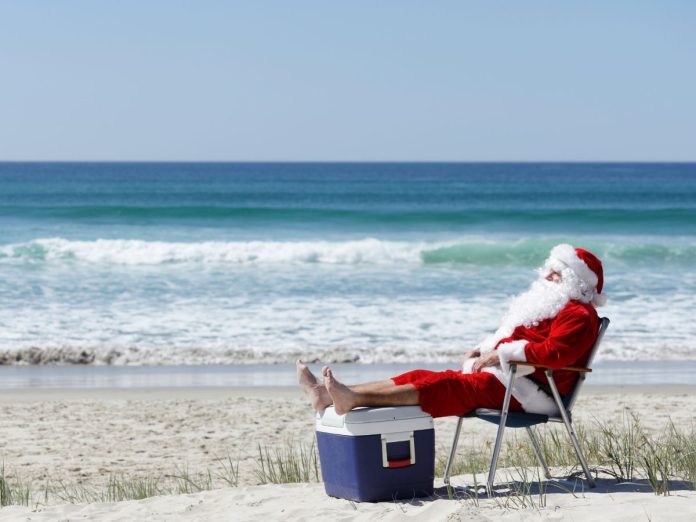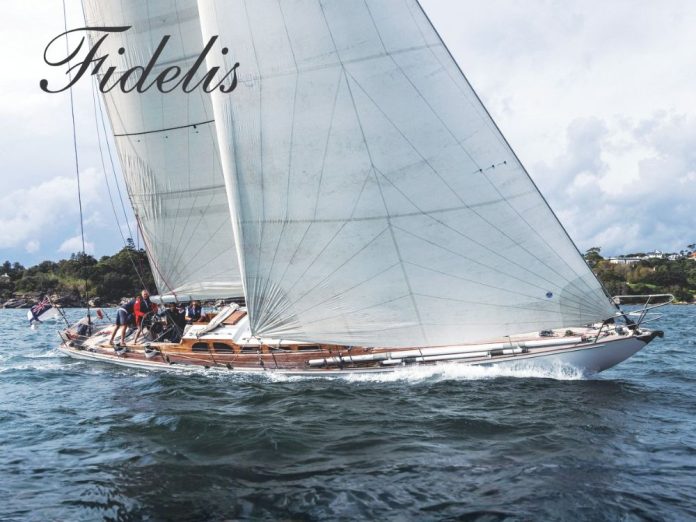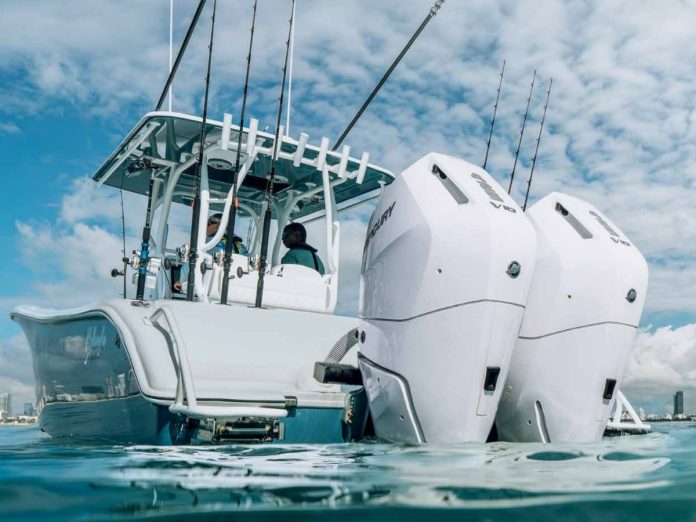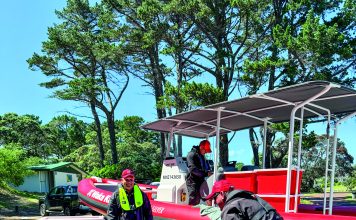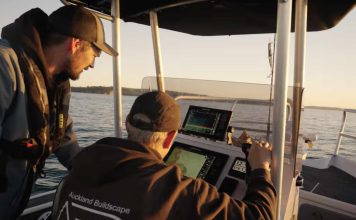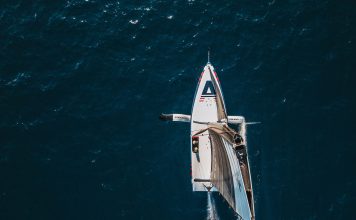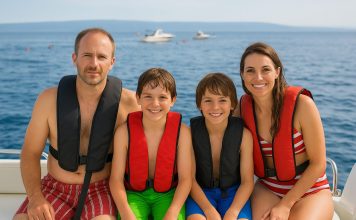The days when sailors had to survive on a diet of salted pork and ship’s biscuits while scurvy loosened their teeth are long gone, but many cruisers still miss fresh greens during passages or while swinging at anchor in remote places. Story by Birgit Hakl.
The fresh stack in the fridge soon runs out leaving only frozen provisions (if they have a freezer) or mushy, canned vegetables. On Pitufa we enjoy trips to remote places, often staying for some time. We don’t want to miss out on fresh vitamins while onboard, so we simply carry our own little green oasis and use it to spice up almost every meal.
Visitors to Pitufa are often astounded and rather skeptical when they spot the wild miniature jungle underneath the yacht’s dodger. Most think plants are a hassle to keep on board and are bound to make a mess during passages. To be fair, our first attempts at a garden onboard ended in plenty of wilted leaves and we unintentionally murdered more than one green passenger. But we learned from our mistakes and soon expanding our plantation to increase its production.
A garden guarantees a nutritionally-enhanced diet, especially for long-term cruisers, but it also makes sense to take a few pots on a weekend or holiday cruise – a sprig of herbs turns a boat-made meal into a gourmet treat.
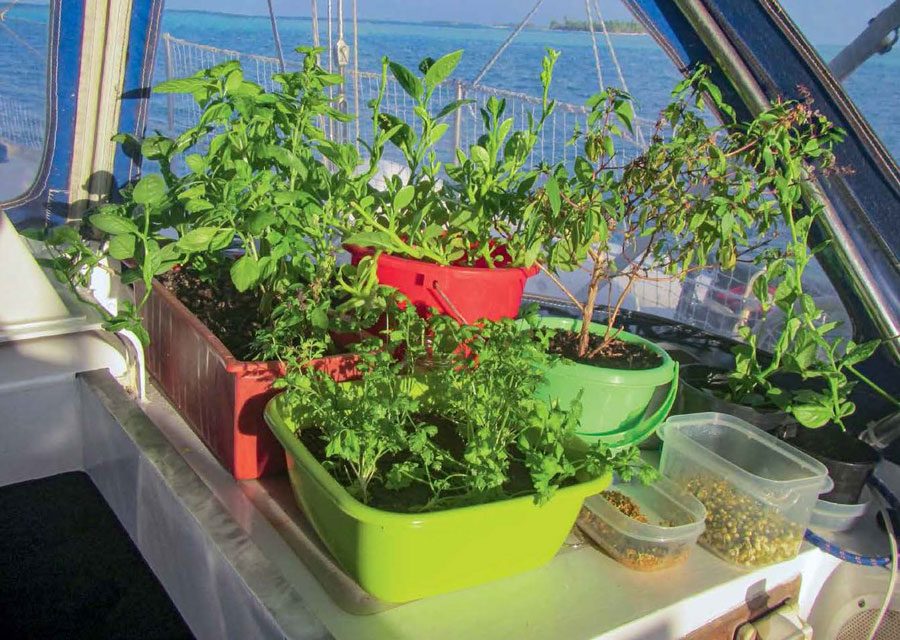
WHAT TO PLANT
If you’re only out for a few weeks, it doesn’t make sense to start from scratch with seeds. It’s faster and simpler to buy pots with fully-grown herbs like basil, oregano, coriander or mint and then transfer them into shipshape containers. Not much effort is involved, and even small amounts of herbs add a lot of flavour to a dish.
Spring onions are also easy: plants sold in bundles with the roots still attached may look dead lying in the fridge at the supermarket, but put them into water for a few hours, then stick them in some soil, and most will retain enough energy to keep growing.
As we live all-year round on our sailing yacht, we also grow hardy species we can harvest for a long time. We have a vine-growing variety of spinach that is very undemanding, grows all year around and the young leaves are delicious in salads and sandwiches. The same goes for arugula (rocket), a spicy salad green that keeps going for many months if you only harvest the outer leaves.
We were skeptical about pak choy [bok choy] seeds, thinking that such large plants wouldn’t be happy in our little containers, but tried them anyway. We found that pak choy grows incredibly fast, so we harvested the outer leaves and cut off the whole plant once it started flowering, thinking that this was the end of it. Fortunately, I didn’t get round to tossing away the remains and after a few days we got a pleasant surprise: young leaves were sprouting again from the root and between the cut-off stems.
Once we had bell-peppers [capsicum] in a lunch salad and simply stuck some seeds into an empty pot. Three months later we harvested the first red peppers and the plant kept on going for over a year, constantly flowering again and producing new fruit. The same goes for chilli plants, which seriously spice up our curries. We have seen tomatoes on other boats, but they are sensitive and take a long time until they yield fruit, so we don’t bother with them.

WHERE TO PLANT
Most plants thrive best in a sunny spot, safe from rain and especially salt spray. Finding the right site for a garden on a boat isn’t always easy, as the green passengers shouldn’t get in the way of lines, winches and other moving equipment. It is important to choose a corner where they can remain when underway.
As gardening beginners, we kept the pots in the cockpit at anchor and stored them below deck on passages, but in rough conditions they toppled over. Many plants also died from lack of sunlight. Moving pots once the weather turns nasty also doesn’t work, because you’re generally too busy reefing to rescue them in time.
On Pitufa no lines are led underneath the dodger, so that’s the perfect spot – dry with plenty of light. On some catamarans and decksaloon monohulls, the bay windows at the front of the saloon are ideal; on other boats, a corner of the cockpit can be secured.
POTS AND SAFETY UNDERWAY
Most regular flowerpots come with a hole on the bottom, so excess water can drain off. Unfortunately, a saucer full of muddy water’s an accident waiting to happen on a pitching, rolling yacht, so we opted for closed containers instead. We prefer using square containers as they snuggle best into the dedicated corner of the cockpit, but any small bucket will do – use whatever fits best into your chosen location.
We have placed the pots on non-skid mats to keep them from sliding or toppling over when the boat is heeling. Additionally, we secure them with a tight bungee cord all around the garden, so the plants can’t simply take off during a squall. A high wooden/ plastic/metal barrier would work, as long as it doesn’t get in the way during manoeuvres. Our garden has survived rough, splashy upwind passages with quite extreme heeling angles.

WATER AND FERTILISER
Be careful with watermaker water, because even small amounts of salt residue each day will collect in the earth causing the plants to start dying. Heavily chlorinated water is also bad for your green friends. Their first choice of beverage is collected rainwater. With closed containers there’s a risk of drowning the roots, so better to water less, but every day. In small pots, the soil soon gets low in nutrients, leaves turn pale and their growth rate slows, so we add fertiliser to the water. Another disadvantage of small containers is that they soon end up packed full of roots, so replanting once (or twice) a year helps long-term growing success.
BUGS AND REGULATIONS
Many cruisers refrain from growing anything onboard because they fear plants will attract insects. We’ve had some ant invasions over time, but so have friends without gardens. As a precaution, we put ant traps behind the pots to discourage potential colonists.
Even the cleanest garden won’t make it through quarantine inspections when clearing into island nations in the Pacific, so enjoy a last big salad, wok, or spring roll feast before you move on to a new cruising destination! Having your garden confiscated and destroyed by customs officials won’t just hurt your feelings, but also your wallet. BNZ
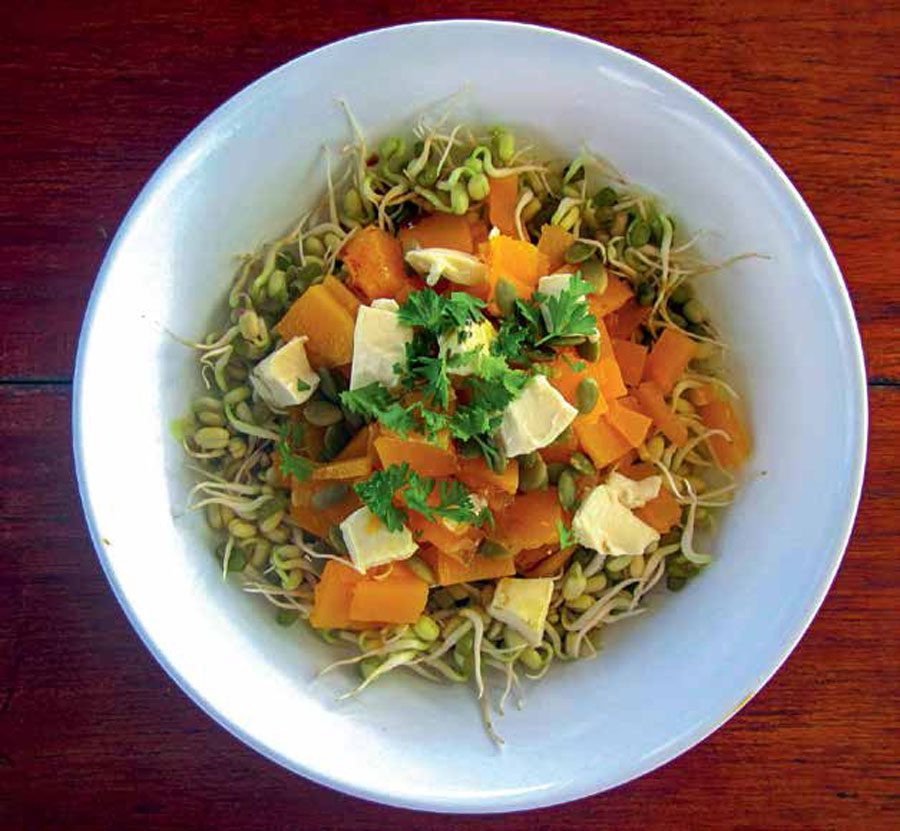
GROWING SPROUTS
Some sprouts require elaborate equipment, which might appeal to cruisers with lots of space and a soft spot for fancy gadgets, but we have specialised in lentils and mung beans – they grow quickly, produce astounding amounts of biomass and thrive in a simple plastic box.
• Pour beans/lentils into a plastic container, so the bottom is covered
• Fill the container with water and let the beans soak overnight
• Drain the water, wash the grains thoroughly and put a lid on the container (to keep insects out and humidity in)
• Let them sprout for two to five days, harvesting part of the crop every day. Rinse the sprouts twice a day; the remaining humidity is enough to keep them growing.












